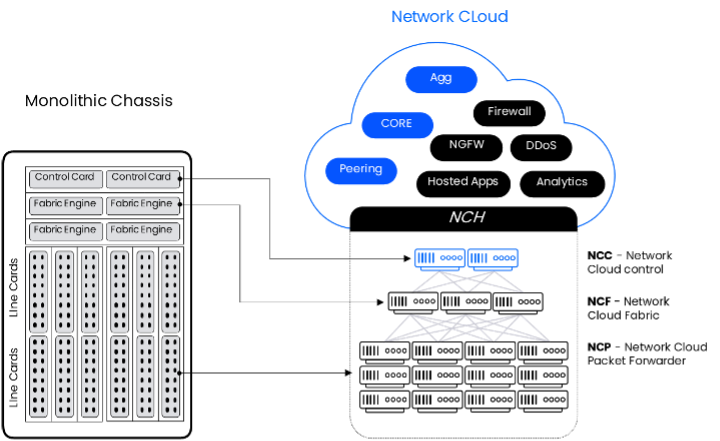What Is Network Edge?
The network edge is best explained as the outer shell of a network. It’s the closest part to end-user devices, such as home modems, smartphones and IoT devices. This is where data is created and used, and where the network connects to the real world.
As more devices get connected and as more compute-demanding services emerge, the significance of the network edge cannot be overstated. Since many devices generate data, the network edge emerges as a potential bottleneck within network architecture. Therefore, wise investments and compute improvements in network edge infrastructure are vital for handling the rising data load.
What are the challenges faced by service providers in network edge routing?
Edge routing plays a critical role in meeting the diverse needs of business customers across various use cases. However, shifting to a distributed network presents several challenges. Service providers must tackle these challenges to establish a strong, adaptable network edge that meets growing capacity and modern application demands.
Five key challenges arise when transitioning to network edge routing:
- Elastic bandwidth: In the face of growing devices and data needs, dynamic scalability ensures efficiency without disruptions.
- Network reliability: Such reliability is crucial for constant high-performance connectivity, especially in real-time services.
- Interoperability: The interoperability of diverse equipment, services and protocols is critical for boosting network performance.
- Network operations: Handling multiple and distributed routers with disparate operational teams can be complicated.
- Network security: The network edge’s open internet exposure, high traffic, varied endpoints, decentralized management, and complex nature render it highly vulnerable to security attacks.
Additionally, the cost implications of complex edge networks are significant. Service providers need efficient solutions for enhanced efficiency, innovation and cost-effectiveness while ensuring high-quality performance.
Is edge computing different from network edge?
While edge computing and network edge are often used interchangeably, they are two different concepts. Edge computing means placing computing power and data storage close to the edge of the network, optimizing real-time services. On the other hand, the network edge is the point where the network meets the physical world and the internet.
In essence, edge computing moves computation closer to where data is generated, while the network edge is the geographical location where the network meets the physical world. Both concepts work together to enhance modern networks by increasing performance, reducing latency, and strengthening security.
DriveNets and edge networking
The rise of edge networking brings new network services. Yet it also raises challenges for service providers that must navigate through many disparate services, types of equipment, and teams. DriveNets Network Cloud solves this with a two-building-block network architecture, which sets it apart from traditional network vendors that typically maintain a wide and complex product portfolio. DriveNets’ proven commercial deployments make it a leading choice for edge networking.
DriveNets Network Cloud enables service providers to build their networks using cloud-like principles, including the separation of software and hardware, utilization of standard white boxes, and implementation of virtualization. The result is multiple and diverse applications that make use of a single shared resource pool, introducing a new network approach.

Unlike traditional networking solutions, DriveNets Network Cloud empowers service providers to establish and manage their edge networks as a single cluster with multiple network entities sharing common resources. This innovative approach delivers superior performance and simplicity while offering unmatched agility and scalability.
Network edge is shaping the future of connectivity
The network edge holds immense importance in today’s interconnected world. As more devices join the digital landscape and demand for compute-intensive services rises, the network edge becomes a crucial focal point.
The need to transition towards connectivity that is more decentralized, intelligent and secure brings forth several challenges that service providers must overcome. From elastic bandwidth to network security, these hurdles necessitate strategic solutions for a robust and adaptable network edge. As service providers’ customers look for ways to improve efficiency, innovation and cost-effectiveness, the network edge is a key area where progress and innovation are shaping the future of connectivity in networking.
Additional Network Edge Resources
Video
White Paper
Blog





